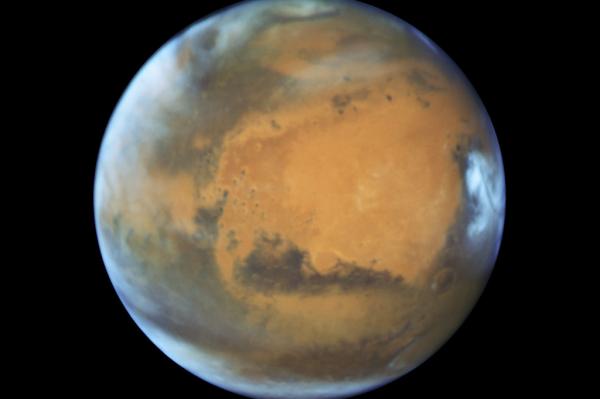
GUADALAJARA, Mexico, Sept. 27 (UPI) — SpaceX CEO Elon Musk discussed his plans to help humans travel to and colonize Mars at the International Astronautical Congress on Tuesday afternoon.
Prior to his presentation, Musk’s company released a video detailing designs for the rocket and spaceship that they hope carries astronauts to the Red Planet.
Musk shared the dimensions of the two models in a Tweet, writing that the rocket will be 39 feet in diameter, while the spaceship will measure 55 feet in diameter. Stacked one on top of each other, the combo — called the SpaceX Interplanetary Transport System — will rise more than 400 feet tall.
The title of Musk’s speech to the congress was titled “Making Humans a Multiplanetary Species.”
In his presentation, Musk detailed the history of his aerospace’s company’s progress, while also laying out the plans for the future, including a manned mission to Mars.
Musk offered details on the two crafts that will help SpaceX accomplish that feat. Among the more interesting specifics, the massive rocket will be made of a new type of carbon fiber and feature a whopping 42 Raptor engines.
Musk told the audience it would essentially be a scaled-up version of the company’s Falcon 9 rocket — the rocket that’s been used to deliver supplies to the International Space Station. He also reminded the audience that SpaceX had just recently executed a test fire of a Raptor engine prototype.
The explosive end of the rocket will feature a unique configuration of thrusters. An outer ring of engine thrusters will be fixed in place and provide power to the giant rocket, while an inner ring will be rotational and offer maneuverability.
Musk also discussed funding. He said he will contribute as much as he can, personally, but that myriad sources will pitch in.
“Ultimately this is going to be a huge public-private partnership,” Musk said.
The CEO said the perfection of reusable rocketry and technology for the production of fuel on Mars would both help drive down operation costs.
As for a timeline, Musk said he and his engineers are being purposefully fuzzy on dates, but that if all goes well, a manned mission could launch within a decade. That’s inline with Musk’s previous statements that a manned mission to Mars could happen by 2024.
If nothing else, Tuesday’s announcement and presentation offered proof that the zeal of Musk and his company hasn’t been dampened by this month’s fiery rocket explosion. The fireball destroyed a $60 million Falcon 9 rocket, as well as a $200 million satellite that Facebook was planning to use to deliver Internet access to remote villages in Africa, Asia and Europe.
“Still working on the Falcon fireball investigation,” Musk wrote on Twitter in the wake of the September 1 explosion. “Turning out to be the most difficult and complex failure we have ever had in 14 years.”
SpaceX’s Falcon 9 rocket will remain grounded for several more months, but for now, the unmanned missions to Mars — the Red Dragon missions — remain tentatively scheduled for 2018 and 2020. The test flights will offer SpaecX a chance to practice landing large vehicles on the Red Planet.
NASA, which has its own plans to take astronauts to Mars, has promised technical support for the Red Dragon missions, but is not providing funding.
Musk’s bold plans were long on ambition and relatively short on specifics. But even as SpaceX faces new doubters in the wake of a string of failures, some say that’s OK.
“His job is to provide inspirational leadership not just for SpaceX but for the larger space community,” John Logsdon, the former director of George Washington‘s Space Policy Institute, told the Washington Post. “There hasn’t been someone like that for a very long time.”






